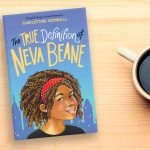When much of the United States, and the world, was disrupted by the pandemic in March 2020 people were surprised that I could work from home. After all, many people think my main job consists of sitting around reading young adult books while I wait for someone to come check out a book.
I understand the misconceptions about the role of librarians in communities and schools. Between video editing gigs in my early days in Los Angeles, I relied on the public library for DVDs and books. A woman I presumed to be the librarian showed me where to find a section I was seeking. Maybe librarian would be a good back up career, I thought, if editing didn’t work out. That’s not exactly how I ended up a librarian, but video editing obviously did not work out.
What Does a Teacher Librarian Teach?
A teacher librarian’s primary duty is to design and deliver instruction in information literacy aligned to Model School Library Standards (MSLS). A teacher librarian supports faculty in finding quality resources and implementing new technology and supports students in accessing and using information in all formats.
While I greatly miss my beautiful library with its walls lined with books and two-story windows overlooking the San Gabriel Mountains, information needs do not disappear in distance learning. However, the teacher librarian’s expertise in connecting their community with answers to information needs is not dependent on a physical space.
Creating Virtual Library Spaces
The first challenge was creating online spaces where people drop in to find the information they need, get help, or just find space to work and indulge in the wonderfulness of books.
For teachers, the solution seemed obvious as we already had a course on the learning management system (LMS) that I was leading for professional development for a group of teachers. I added in the entire faculty and staff to the course, expanded the scope to include other tools such as Google Apps and Zoom, and rearranged the materials for easier navigation.
In addition to courses, the LMS allows for the creation of groups, which provide a place for discussion threads, an ability to send updates to all members, a space to calendar events, and a folder for resources. Unlike a course, it is not tied to grades or grading periods. Thinking of the LMS as our campus and courses as the classrooms, the groups were like common areas such as the library. I filled the shelves — or folders in our digital room— with resources. I started with the immediate need for tutorials and tips on how to access synchronous and asynchronous work. I then added resources for using eBooks, our digital library, and times and links for Ask-a-Librarian drop-in hours. I co-hosted these online conference rooms with other teacher librarians to not violate the district policy to not be alone in a room while still providing live access to help from the library. Finally, I included resources for families facing food insecurity, housing insecurity, and other social or mental health needs during the pandemic.
Curating a Virtual Collection
The library always had a small eBook collection and an abundant digital library consisting of reference and database subscriptions provided by our school district and state library. In addition, many of our generous vendors provided free access to thousands of eBooks during campus closures due to the pandemic. One of the most urgent tasks was getting this information to the students and providing clear instructions on how to access the many platforms. I did this using the group updates, my website, and screen-casting tools. Having the group in the LMS allowed me to share secure information, such as school-specific log-in information.
In the rush to close campuses, many teachers did not get to have students check out books taught in the final quarter, so I helped to find digital Open Education Resource versions or alternatives to the original. One particular success was using Holocaust survivor testimonies in the United States Holocaust Memorial Museum’s Encyclopedia as a substitute for Elie Wiesel’s Night for a found poem lesson I teach as part of a 9th grade English unit. The student poems were so successful — and I liked the chance to review primary sources — the teacher and I decided we would keep this new version even when we return to on-campus instruction.
Providing Online Instruction and Support
Most importantly, teacher librarians, like all teachers, continued to teach. Since teacher librarians do not have assigned rosters each period, many people forget their primary activity throughout each day is teaching. The standards we teach apply to every class, so teacher librarians need the flexibility to work with all classes during research units throughout the semester. Just like in the library, in our virtual campus, students would visit the library for information literacy lessons. These lessons would appear as blended learning lessons in the courses in the LMS, where teachers would add me as a co-teacher for the unit or the whole semester, depending on the scope and length of the unit covering the MSLS. While some teachers wanted to adjust the scope of the units, others who were not scheduled wanted me to help them and their students learn to access digital resources and to use digital tools to demonstrate their learning.
Holding Spaces for Literacy Engagement and Community
In addition to instruction and resources, librarians create community to celebrate reading and writing. While there is something magical about gathering on the library couches to read and talk about books, the literature club continued to meet online. Each week students were eager to share their reading and workshop creative writing. I moved forward with my literary assemblies featuring young adult authors reading their work and answering student questions about writing. One boon of distance learning is that I was able to work with other teacher librarians so students could access events across campuses.
Libraries Are About Community, Not Walls
Librarianship is a commitment to connecting patrons to relevant, diverse sources of information to meet their information needs and to teach patrons to be independent, life-long, ethical information users, and creators. A teacher librarian, any librarian, can do that whether in a room full of books or in a box with a virtual background of a room full of books.






